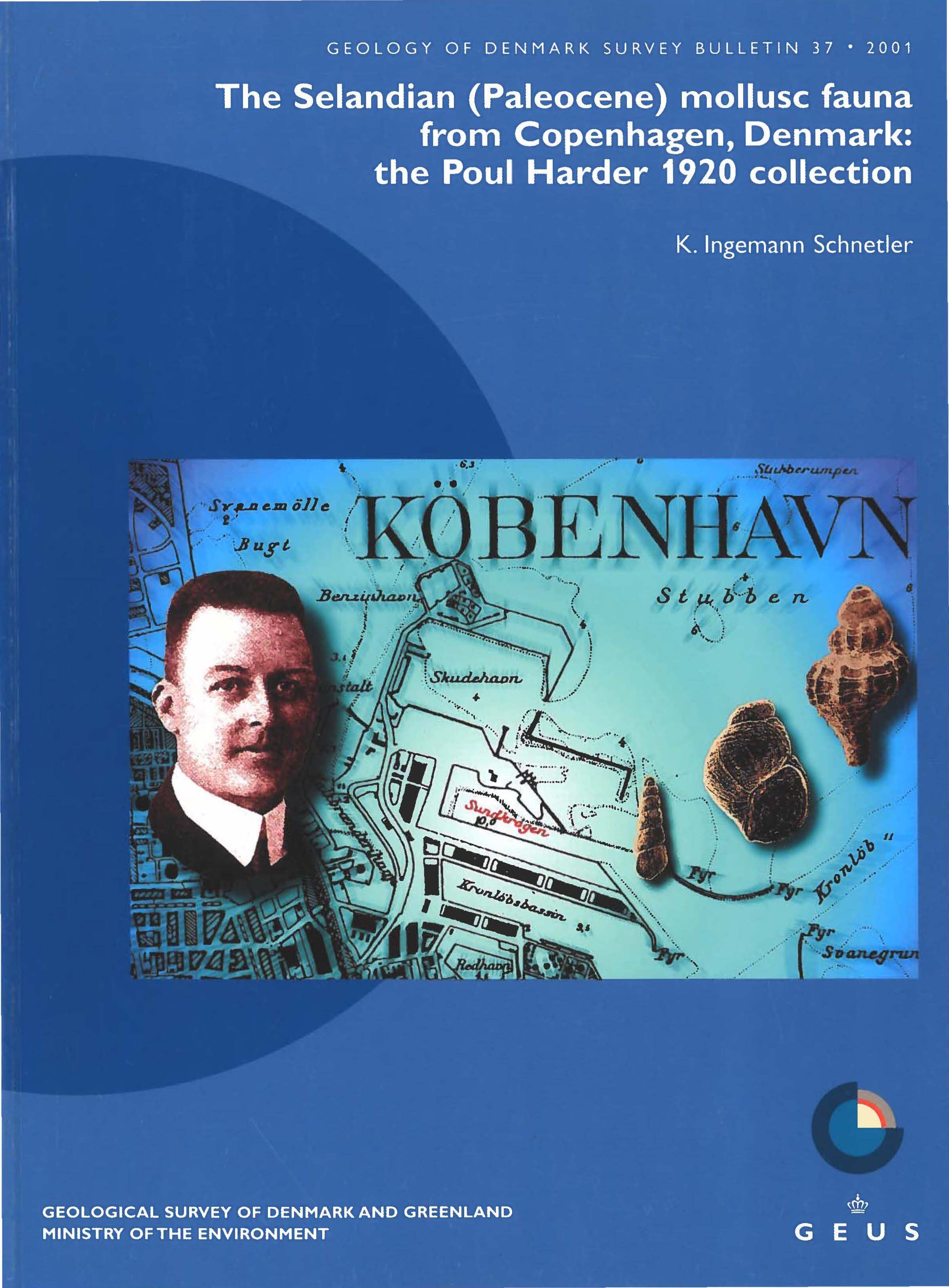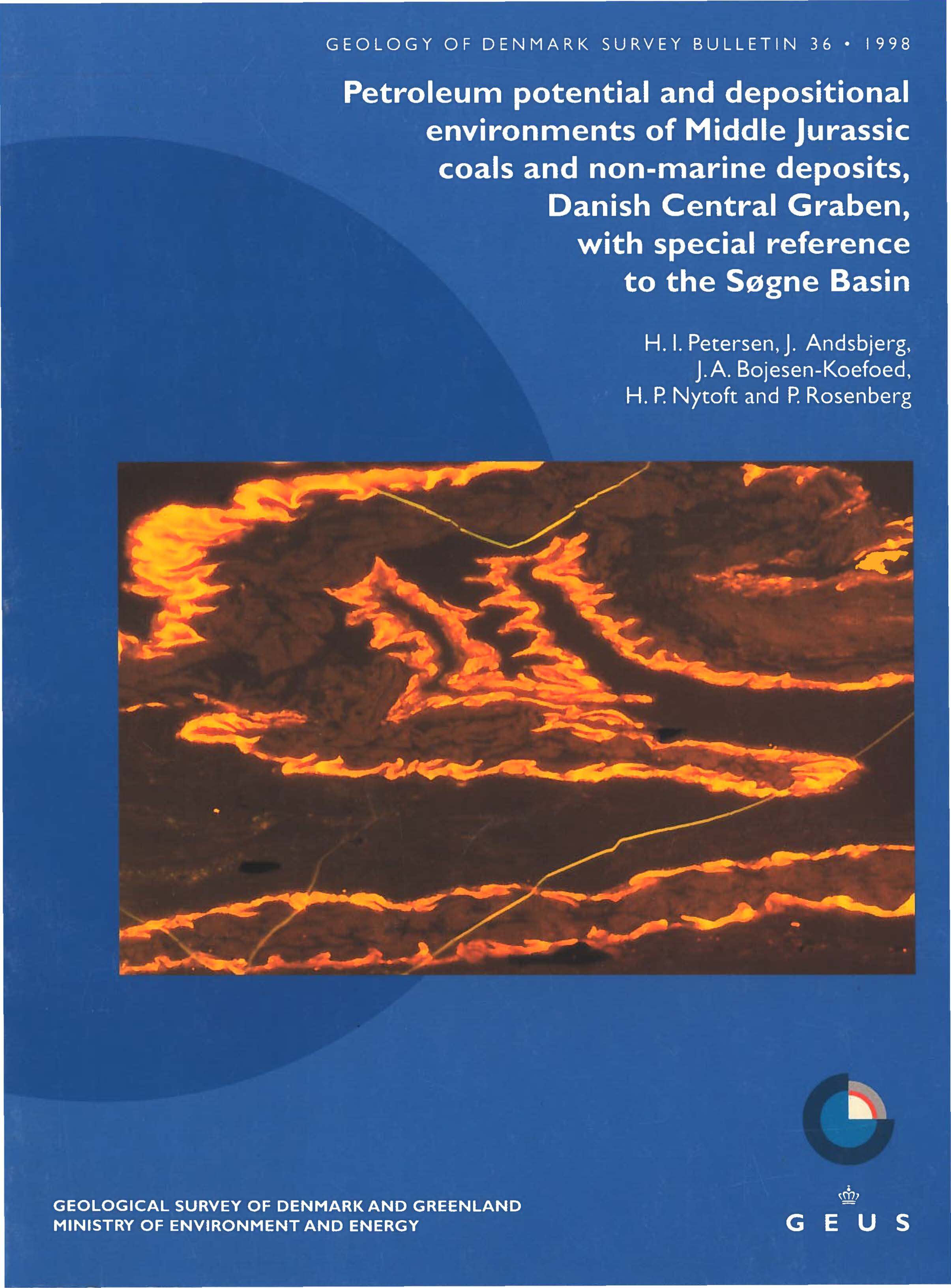Archives
-

The Selandian (Paleocene) mollusc fauna from Copenhagen, Denmark: the Poul Harder 1920 collection
Vol. 37 (2001)Cover illustration: Part of the map sheet 'København' (M 3130), 1:20 000, enlarged x 1.3. Copyright: Kort & Matrikelstyrelsen. inset: Dr Poul Harder (photograph in the files of the Geological Survey of Denmark and Greenland) and three of the new gastropod species established in this bulletin.
Kaj Ingemann Schnetler
In the late 19th and early 20th centuries during urban excavations in the Copenhagen area, a rich mollusc fauna was recovered from the early Selandian (Late Paleocene) Lellinge Greensand. One location, Sundkrogen, attracted particular attention since the molluscs collected in 1920 from the newly exposed strata here became the subject of a long-lasting controversy about publication rights. One aspect of this conflict was that the collection made by Poul Harder was never studied in detail.
This bulletin recalls the controversy and describes the now submerged Sundkrogen locality in the context of a detailed study of the molluscs from this, and other, Danish localities. The study recognises 27 new mollusc species and one new genus. Selandian stratigraphy and palaeoenvironment are described, and affinities to other faunas in Europe and Greenland are discussed.
-

Petroleum potential and depositional environments of Middle Jurassic coals and non-marine deposits, Danish Central Graben, with special reference to the Søgne Basin
Vol. 36 (1998)Cover photo: Photomicrograph of yellowish-orange fluorescing folded cutinites derived from the outer layer of leaves (cuticle) in a groundmass of vitrinite. Sample 4473A, West Lulu-1 well, Middle Jurassic Bryne Formation, seam T3, 17.78-25.40 cm; reflected blue-light, water immersion. The section is c. 300 µm across.
Henrik I. Petersen, Jan Andsbjerg, Jørgen A. Bojesen-Koefoed, Hans P. Nytoft and Per Rosenberg
The presence of hydrocarbons with typical terrestrial geochemical signatures in the Danish Central Graben has made the search for petroleum-prone terrestrial source rock and intriguing question.
This bulletin gives a comprehensive account of Middle Jurassic coals and carbonaceous mudstones in the Danish sector of the North Sea, particularly those of the Bryne Formation. A multidisciplinary approach incorporating organic petrography and geochemistry, sedimentology and sequence stratigraphy, provides strong evidence for the petroleum-proneness of the coals and for the close relationship between generative capacity and depositional environment.

